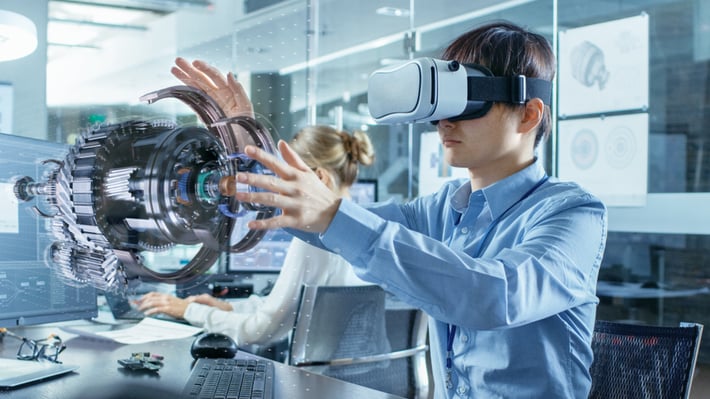How Augmented Reality Can Improve Facility Management

The performance of a building is strongly determined by the design and construction process. However, high performance can only be sustained with effective facility management. Equipment and components wear down over time, while sensors and controls can get disconfigured. Mechanical, electrical and plumbing systems last longer with adequate use and regular maintenance.
When detailed technical information is available, buildings can be managed more easily. For example, maintenance is simpler when the exact locations of components are known. Modifications and additions also become easier when the current state of building systems is well documented.
Augmented reality (AR) can be a powerful tool for facility management. Using headgear, key information can be overlaid within the field of vision during an inspection. This simplifies maintenance tasks and building system modifications, while making work safer.
Use the latest engineering technologies in your building project.
Simplifying Work with Augmented Reality
A promising application of AR is adding visual cues to mechanical equipment, electrical installations and other systems. MEP engineers work with many physical processes that produce no visible signs, such as heat transfer and electric current.
- With human vision alone, there is no way to observe component temperatures and the current carried by conductors. However, AR headgear can display these values.
- AR can also identify the components involved in a specific maintenance task, reducing the chance of human error. This is especially useful when working in cluttered spaces, such as mechanical and electrical rooms.
- Another advantage of AR is not having to carry technical documents, since headgear can display the necessary information. When integrated with field reporting software, AR can also ensure that inspection data, photos, and maintenance notes are captured and synced instantly, reducing paperwork and improving communication between field teams and managers. This also frees up both hands for the corresponding task, and technicians can concentrate better.
- AR can display components that are hidden behind equipment or ceilings, and also components that are embedded in walls and floors.

An AR system must have access to updated information to be useful, or otherwise it can cause confusion. Building Information Modeling (BIM) can be used to create a real-time model of the building, also called a digital twin. Strategically placed sensors can track building conditions, and the model can also be updated with data gathered during inspections and maintenance.
BIM is also useful when planning maintenance, since the task can be reviewed in a computer model before visiting the actual location. The technical personnel arrives with clear instructions, and also a powerful tool to identify the components involved.
Improving Safety with Augmented Reality
Augmented reality not only simplifies work. Since AR headgear enhances the information gathered by human senses, it also improves awareness of the surrounding risks. For example, workers are less likely to touch a high-voltage component when a clear warning is shown in a heads-up display (HUD). The same applies for hot surfaces, which can also be marked with visual cues.
AR can be used to indicate hazards of all types, such as high-speed machinery and areas where there is a risk of falling from height. Maintenance departments get very familiarized with facilities, but hazards are easily ignored when a task requires concentration.
Facility managers can greatly benefit from new technologies such as augmented reality. Maintenance tasks and system modifications can be completed more efficiently, while helping protect workers. In a few words, AR can help you complete the task at hand, while warning you about the surrounding hazards.

Michael Tobias
Michael Tobias, the Founding Principal of NY Engineers, currently leads a team of 150+ MEP/FP engineers and has led over 4,000 projects in the US
Join 15,000+ Fellow Architects and Contractors
Get expert engineering tips straight to your inbox. Subscribe to the NY Engineers Blog below.

